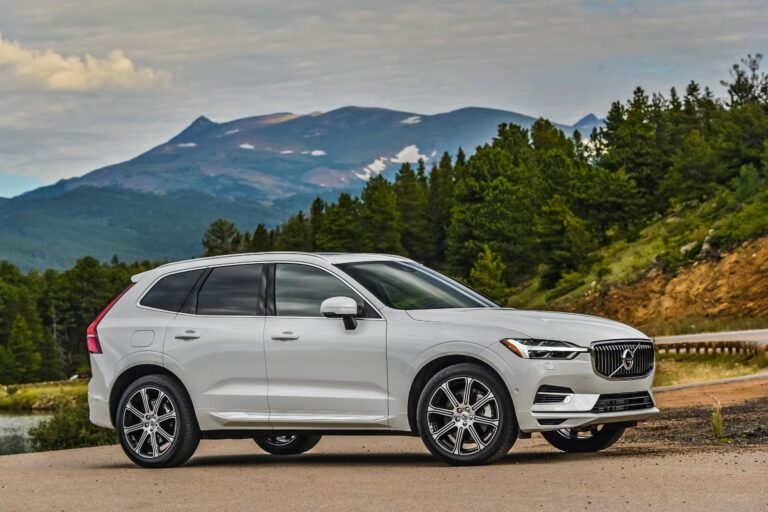Used Pump Hoist Trucks For Sale: A Comprehensive Buyer’s Guide
Used Pump Hoist Trucks For Sale: A Comprehensive Buyer’s Guide cars.truckstrend.com
In the demanding world of well drilling, water system installation, and maintenance, a pump hoist truck is an indispensable asset. These specialized vehicles, equipped with powerful hoists and robust booms, are designed to safely and efficiently lift, lower, and set heavy submersible pumps, well casings, and other critical components into and out of wells. While a brand-new pump hoist truck represents a significant capital investment, the market for used pump hoist trucks for sale offers a compelling alternative for contractors, well drillers, and utility companies looking to expand their fleet, replace aging equipment, or start a new venture without breaking the bank.
This comprehensive guide will delve into everything you need to know about purchasing a used pump hoist truck, from understanding its core components and the compelling benefits of buying pre-owned to navigating the inspection process, identifying reliable sellers, and making a smart, informed decision.
Used Pump Hoist Trucks For Sale: A Comprehensive Buyer’s Guide
Understanding the Pump Hoist Truck: The Backbone of Well Operations
At its core, a pump hoist truck is a heavy-duty vehicle specifically engineered for vertical lifting tasks in the field. It combines a robust truck chassis with a specialized lifting apparatus. Key components typically include:
- Chassis: The foundation of the truck, often a medium to heavy-duty commercial truck frame, providing stability and mobility.
- Boom/Mast: A telescopic or fixed mast structure mounted on the truck bed, designed to extend vertically over a wellbore. Its height and reach determine the depth and offset capabilities.
- Hoist/Winch System: A powerful hydraulic or electric winch with a steel cable that runs over the boom, providing the lifting and lowering power for pumps and other equipment.
- Control Panel: Located on the truck, this panel allows the operator to precisely control the boom, hoist, and other hydraulic functions.
- Outriggers/Stabilizers: Extendable hydraulic arms that provide crucial stability to the truck during lifting operations, preventing tipping.
- Deck Space & Tool Compartments: Dedicated areas for carrying tools, pipes, and other necessary equipment for fieldwork.

The primary function of these trucks is to install and retrieve submersible pumps, often weighing hundreds or even thousands of pounds, from depths that can exceed a thousand feet. They are also vital for well maintenance, logging, and rehabilitation tasks, making them an essential tool for any serious well service professional.
Why Consider Used? The Compelling Advantages
The decision to buy a used pump hoist truck often boils down to a blend of practical and financial benefits:

- Significant Cost Savings: This is by far the most attractive advantage. New pump hoist trucks can cost upwards of $200,000 to $400,000 or more, depending on capacity and features. A well-maintained used unit can be acquired for a fraction of that price, freeing up capital for other business investments or reducing overheads.
- Immediate Availability: Unlike new trucks that may have long lead times for manufacturing and customization, used pump hoist trucks are typically available for immediate purchase and deployment. This is crucial for businesses needing to replace equipment quickly or capitalize on new project opportunities.
- Depreciation Avoidance: New vehicles experience the steepest depreciation in their first few years. When you buy used, much of this initial depreciation has already occurred, meaning your investment retains its value more effectively over time.
- Proven Performance: A used truck, especially one with a good maintenance history, has already demonstrated its capabilities in real-world conditions. You can often glean insights into its reliability and performance from previous owners or maintenance records.
- Access to Discontinued Models or Features: Sometimes, older models might have features or build qualities that are no longer available in newer versions, or they might simply be preferred for their simplicity and robustness.
- Environmentally Friendly: Opting for a used truck contributes to a more sustainable economy by extending the lifecycle of existing equipment and reducing the demand for new manufacturing.

Key Factors to Evaluate When Buying a Used Pump Hoist Truck
Purchasing a used pump hoist truck requires meticulous attention to detail. A thorough inspection is paramount to ensure you’re getting a reliable machine, not a money pit. Here’s what to focus on:
-
1. Boom and Mast Condition:
- Visual Inspection: Look for cracks, dents, or signs of previous repairs (especially welds) on the boom sections. Inspect the boom extension cylinders for leaks.
- Pins and Bushings: Check for excessive wear or play in the pivot points and pins.
- Boom Cable/Rope: Inspect for fraying, kinks, rust, or excessive wear.
- Sheaves/Pulleys: Ensure they rotate freely and are not grooved or damaged.
-
2. Hoist/Winch System:
- Operation: Test the hoist under a load (if possible and safe). Listen for unusual noises.
- Brakes: Verify the hoist brakes engage smoothly and hold the load securely.
- Hydraulics: Check for leaks around the motor and gearbox. Ensure smooth operation.
- Capacity: Confirm the stated lifting capacity matches your needs and the unit’s specifications.
-
3. Hydraulic System:
- Hoses and Lines: Inspect all hydraulic hoses for cracks, bulges, leaks, or chafing.
- Cylinders: Look for leaks or scoring on the cylinder rods (e.g., outriggers, boom extension).
- Pump and Reservoir: Check the hydraulic pump for leaks or unusual noises. Inspect the fluid level and condition in the reservoir – clear, not milky or burnt-smelling.
- Filters: Ask about filter change intervals.
-
4. Chassis and Drivetrain:
- Engine: Listen for unusual noises, check for excessive smoke, fluid leaks. Review service records for oil changes, major repairs.
- Transmission: Test all gears, check for smooth shifting, and listen for grinding or slipping.
- Frame: Inspect the truck frame for cracks, bends, or severe rust, especially around mounting points for the hoist.
- Tires: Check tread depth and condition. Uneven wear can indicate alignment or suspension issues.
- Brakes: Test the truck’s brakes.
- Mileage/Hours: High mileage or engine hours don’t necessarily mean a bad truck, but they should be factored into the price and your expected lifespan.
-
5. Controls and Safety Features:
- Functionality: Test every control lever, switch, and button for the boom, hoist, and outriggers.
- Emergency Stops: Ensure all emergency stop buttons are functional.
- Lights and Alarms: Verify all work lights, warning lights, and alarms are operational.
- Outriggers: Test their extension, retraction, and stability. Check pads for wear.
-
6. Maintenance Records:
- This is arguably the most crucial piece of information. Comprehensive service records will tell you how well the truck was maintained, what repairs were performed, and when. A seller who can provide detailed records indicates a responsible owner and a potentially more reliable machine.
-
7. Professional Inspection and Load Test:
- If possible, hire a certified heavy equipment mechanic specializing in cranes or hoists to perform a pre-purchase inspection. A load test, where the hoist lifts a known weight, is highly recommended to verify its true lifting capacity and stability under stress.
Where to Find Used Pump Hoist Trucks For Sale
The market for used pump hoist trucks is diverse. Here are the most common avenues:
- Online Equipment Marketplaces: Websites like MachineryTrader.com, TruckPaper.com, EquipmentTrader.com, and IronPlanet.com are excellent resources, offering thousands of listings from dealers and private sellers.
- Specialized Equipment Dealers: Many dealers focus specifically on heavy equipment or utility trucks. They often inspect and service their inventory before sale, offering some peace of mind, though prices might be slightly higher.
- Auctions (Online & Live): Ritchie Bros., IronPlanet, and local auction houses frequently feature pump hoist trucks. Auctions can offer great deals but require quick decision-making and often sell items "as-is, where-is."
- Direct from Contractors/Companies: Sometimes, businesses upgrading their fleet or retiring will sell directly. This can lead to good deals and provide direct access to the truck’s history. Networking within the well drilling industry can uncover these opportunities.
- OEM Websites: Manufacturers like Maintainer, Load King, Stellar, Altec, and others sometimes have used equipment listings on their official websites or through their dealer networks.
The Buying Process: A Step-by-Step Guide
- Define Your Needs: Determine the minimum lifting capacity, boom reach, and truck chassis requirements (e.g., single vs. tandem axle, 4×4 vs. 4×2) based on your typical jobs. Set a realistic budget.
- Research and Shortlist: Browse online listings, identify potential candidates that meet your criteria.
- Initial Contact & Questions: Reach out to sellers. Ask about the truck’s history, reason for selling, maintenance records availability, and any known issues. Request additional photos or videos if the online listing is insufficient.
- Arrange Inspection: Schedule an in-person visit. If you can’t go yourself, arrange for a trusted third-party inspector.
- Negotiate Price: Based on your inspection findings and market research, negotiate a fair price. Be prepared to walk away if the seller isn’t reasonable or if the truck has too many issues.
- Finalize Purchase: Once an agreement is reached, ensure all paperwork (bill of sale, title transfer, any warranties) is correctly processed.
- Transportation: Plan for transportation. Heavy equipment usually requires specialized hauling. Factor this cost into your budget.
Common Challenges and Solutions
- Hidden Defects: Solution: Always insist on a professional pre-purchase inspection and, if possible, a load test. Ask for detailed maintenance records.
- Lack of Maintenance Records: Solution: Proceed with extreme caution. If records are missing, assume the worst and factor in potential immediate repair costs. Negotiate a significantly lower price.
- Transportation Logistics: Solution: Research heavy haulage companies early in the process. Get quotes and understand delivery timelines.
- Financing: Solution: Explore equipment financing options from banks or specialized lenders. They understand the value of heavy machinery.
- Post-Purchase Maintenance: Solution: Even with a thorough inspection, budget for immediate fluid changes, filter replacements, and any minor repairs to ensure the truck is ready for demanding work.
Types and Capacities of Pump Hoist Trucks
Pump hoist trucks come in various configurations and capacities, catering to different well depths and pump sizes:
- Lifting Capacity: Ranges from smaller 5-ton or 7-ton units suitable for residential wells to heavy-duty 15-ton, 20-ton, or even 30-ton machines for large commercial, agricultural, or municipal wells.
- Boom Length/Reach: Directly impacts the depth from which a pump can be retrieved and the offset from the truck. Longer booms are needed for deeper wells or challenging access.
- Chassis Type: Can be mounted on single-axle trucks for lighter capacities and maneuverability, or tandem-axle trucks for greater stability and heavier loads.
- Control Systems: Modern trucks may feature hydraulic or electronic controls, while older models might have mechanical levers.
Estimated Price Range for Used Pump Hoist Trucks For Sale
The price of a used pump hoist truck varies dramatically based on its age, make, model, lifting capacity, condition, mileage/hours, and location. The table below provides estimated price ranges for illustrative purposes. These are not fixed prices and should be used only as a general guide.
| Capacity (Tons) | Age (Years) | Condition | Estimated Price Range (USD) | Key Considerations |
|---|---|---|---|---|
| 5-7 Ton | 10-15+ | Fair | $30,000 – $60,000 | Suitable for shallower residential wells. Likely higher hours/mileage. Expect some wear and tear, potential for immediate repairs. Good entry-level option for tight budgets. |
| 5-10 | Good | $60,000 – $90,000 | More reliable, better condition. May have modern features. Less immediate repair needed. | |
| 8-12 Ton | 10-15+ | Fair | $70,000 – $110,000 | Versatile for residential and smaller commercial wells. Check hydraulics and winch carefully. |
| 5-10 | Good | $110,000 – $160,000 | A strong mid-range option, often well-maintained. Good balance of capacity and cost. | |
| 3-7 | Excellent | $160,000 – $220,000 | Near-new condition, possibly still under some manufacturer warranty (check terms). Minimal immediate issues. | |
| 13-20+ Ton | 10-15+ | Fair | $120,000 – $180,000 | For heavy-duty commercial, industrial, or municipal wells. Significant wear possible due to heavy work. Requires thorough inspection. |
| 5-10 | Good | $180,000 – $280,000 | Robust units, often with tandem axles. Expect professional-grade maintenance. | |
| 3-7 | Excellent | $280,000 – $400,000+ | High-capacity, almost new. Reflects significant initial investment by previous owner. |
Disclaimer: These prices are highly variable and depend on numerous factors including specific brand (e.g., Maintainer, Load King, Stellar, Altec), exact model, specific features, geographical location, economic conditions, and the urgency of the sale. Always conduct your own market research and obtain professional appraisals.
Frequently Asked Questions (FAQ)
Q1: What is the typical lifespan of a used pump hoist truck?
A1: With proper maintenance, a pump hoist truck can easily last 20-30 years or more. The chassis might need more attention than the hoist mechanism over time. Longevity depends heavily on consistent servicing and avoiding overloading.
Q2: Can I finance a used pump hoist truck?
A2: Yes, many banks and specialized equipment finance companies offer loans for used heavy machinery. Interest rates and terms will depend on the truck’s age, your creditworthiness, and the down payment.
Q3: What brands are considered most reliable for used trucks?
A3: Brands like Maintainer, Load King, Stellar, Altec, and Iowa Mold Tooling (IMT) are generally well-regarded for their durability and availability of parts. Research specific models within these brands.
Q4: How important are maintenance records?
A4: Extremely important. They provide a clear history of the truck’s care, identifying potential recurring issues or major repairs. A lack of records should raise a red flag.
Q5: Should I get a professional inspection?
A5: Absolutely. Unless you are a highly experienced heavy equipment mechanic yourself, a third-party professional inspection is a wise investment that can save you from costly surprises down the road.
Q6: What is the average lifting capacity I might need?
A6: This depends entirely on your typical work. Residential wells usually require 5-10 tons. Commercial, agricultural, or municipal wells often need 10-20 tons or more. Always size up slightly if you anticipate future larger projects.
Q7: Are spare parts readily available for older models?
A7: For reputable brands, common wear parts are usually available, though some specialized components for very old or obscure models might be harder to source. Check with parts suppliers before buying a very old unit.
Conclusion
Investing in a used pump hoist truck can be a highly strategic decision for businesses in the well service industry. It offers a pathway to acquire essential, high-capacity equipment at a significantly reduced cost, allowing for quicker fleet expansion and improved operational efficiency. However, the success of this investment hinges on a meticulous and informed buying process.
By understanding the key components, diligently inspecting potential purchases, thoroughly reviewing maintenance records, and seeking professional advice, you can mitigate risks and confidently select a used pump hoist truck that serves as a reliable, long-term asset to your operations. A well-chosen used truck isn’t just a cost-saving measure; it’s a smart investment in your business’s capability and future success.





